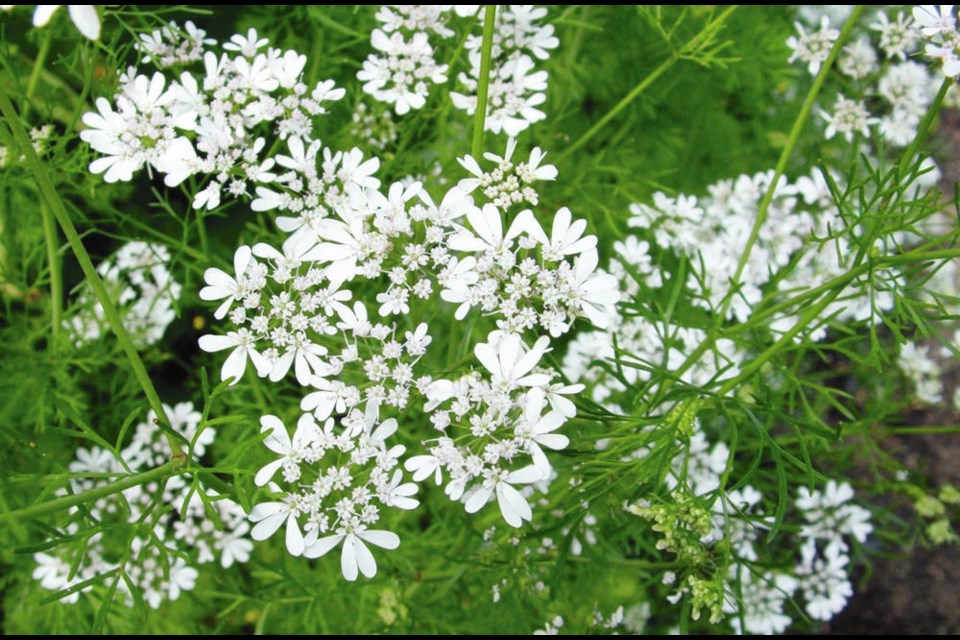Dear Helen: Can coffee grounds be used safely in the garden? I’ve been told they are too acidic and should not be put in the compost.
R.S.
According to the Oregon State University (OSU) Extension Service, coffee grounds are an excellent addition to compost heaps. The nitrogen they contain help to activate the decomposition process.
The OSU findings also indicate that most of the acid is leached from the ground beans in the brewing process and ends up in the coffee we drink.
Shallow layers of coffee grounds can also be mixed or scratched directly into the soil, where they will compost over time “on site,” though years of research at OSU led to a preference for composting them by layering or mixing them into heaps with other materials.
Spread over the ground at any significant depth, coffee grounds will cake over and shed water. Best to mix them in. And anyone who saves coffee grounds in a container as I do, for use later in the garden, knows that wet grounds go mouldy. I store mine in a wide, heat-proof, open container so they can be kept at least partially dry as they await use.
Dear Helen: I was given a heavenly bamboo plant on two separate occasions. Both plants died. Before trying again, I want to find out whether it’s true that the berries poison birds.
J.C.
Nandina domestica (heavenly bamboo) berries contain some cyanide and can be toxic to birds — and to domestic animals — if consumed in quantity.
The plants are graceful and attractive even without berries. Some varieties, and Nandinas planted alone, often produce few berries. Also, pruning out growth that has flowered eliminates berry formation.
Heavenly bamboo shrubs thrive in a humus-rich, well drained soil and part shade. Though fairly drought tolerant once established, they do need watering during dry summer weather. Their tall and relatively narrow, bamboo-like form and lacy appearance lend grace and elegance to the landscape. In Japan, Nandina is considered a talisman of good fortune.
Dear Helen: I’ve been overwhelmed with a green caterpillar infestation this spring, in my mother’s garden, which I recently inherited. They have infested many deciduous trees and shrubs, including lilac and blueberry bushes. I was told to use BTK, but I also want to know how to prevent future infestations. It is stressful to think that many of my mother’s plants might be destroyed.
B.L.
Your pest sounds like winter moth. The adult moths mate and lay eggs in trees and shrubs from late October to the end of January. The eggs hatch early in the spring, usually starting in late March. The emerging caterpillars feed on leaves and flower buds. As they become larger they may roll up leaves and feed inside.
When the feeding stops they pupate in leaf litter around the tree and shrub bases, to emerge as adults and begin mating and egg laying in the fall.
Your mother’s plants will very likely survive because they will have time to produce fresh leaves after the winter moth larvae finish feeding. You can facilitate the plants’ revival, and help to control the pest, by cleaning underneath and around the plants in the summer, watering as needed, and placing a layer of a nourishing compost over the cleaned area. I’d do this twice, both to remove winter moth pupae and to continue feeding the plants.
Bacillus thuringiensis kurstaki (BTK) is effective when applied thoroughly while the caterpillars remain small and are feeding most actively.
In late October, when adult moths emerge, the flightless females move up tree trunks to mate and lay eggs. Sticky bands placed around the trunks soon after mid-October will intercept and trap them.
Wrap 20-cm wide bands of plastic or some other waterproof material securely around the trunk, well above ground level, and spread a thin layer of Tanglefoot or another insect glue on the bands. Do not apply the glue directly onto the trunk. Remove the bands in March. If any become full before that, replace them.
Protect the beneficial insects and wild life that help to control this and other insect pests. Avoid the use of pesticides that harm them, and grow plants with flowers that attract and nourish beneficial insects. Some of the best are sweet alyssum, claendula, cilantro, kale, thyme, dill, parsley, and daisy type blooms.
Weekend column. I’ll be taking a break from writing the Saturday column. The garden beckons.



